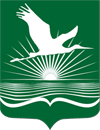Пожалуйста, используйте этот идентификатор, чтобы цитировать или ссылаться на этот ресурс:
https://rep.polessu.by/handle/123456789/33261Полная запись метаданных
| Поле DC | Значение | Язык |
|---|---|---|
| dc.contributor.author | Druk, V.Yu. | - |
| dc.contributor.author | Verich, A.I. | - |
| dc.contributor.author | Друк, В.Ю. | - |
| dc.contributor.author | Верич, А.И. | - |
| dc.date.accessioned | 2025-01-09T07:17:00Z | - |
| dc.date.available | 2025-01-09T07:17:00Z | - |
| dc.date.issued | 2024 | - |
| dc.identifier.citation | Druk, V. Yu. The triad «education-science-innovation»: indicators and challenges for Belarus / V. Yu. Druk, A. I. Verich // Экономика и банки. – 2024. – № 2. – С. 96-103. | ru |
| dc.identifier.uri | https://rep.polessu.by/handle/123456789/33261 | - |
| dc.description | Цель исследования – анализ тенденций развития сферы высшего образования в контексте его взаимодействия с научно-инновационной деятельностью, а также в выявлении закономерностей и устойчивых связей триады «образование-наука-инновации» в контексте их влияния на экономическую безопасность страны. Материалы и методы. Исследование проведено на основе статистических данных, характеризующих отрасли «образование», «наука и инновации». Применены общие (анализ, наблюдение, измерение, сопоставление) и специальные (статистико-экономический, визуализация данных) методы научного исследования. Результаты. В статье проанализирована динамика отдельных показателей, характеризующих инновационный потенциал образования и науки за период 2016-2023 года, изучена результативность инновационной деятельности национальной экономики. Сделан вывод о том, что выявленные негативные тенденции (снижение доли сектора высшего образования в НИОКР, низкий удельный вес расходов на образование в общей сумме расходов бюджета, сокращение доли лиц, окончивших последипломного образования с защитой диссертации на соискание степени кандидата или доктора наук, устойчивое снижение числа студентов в общей численности населения, снижение изобретательской и патентной активности национальных заявителей) могут существенно ограничить потенциал системы образования в области инноваций и научного развития. Определено, что установление закономерностей, которые определяют успешное взаимодействие между образованием, наукой и инновациями, позволит создать модель, способствующую более эффективному обмену знаниями и ресурсами. Заключение. Исследование направлено на создание эффективной стратегии взаимодействия образования, науки и инноваций, что положительно скажется на инновационной активности и, в конечном итоге, будет способствовать устойчивому экономическому росту и повышению конк урентоспособности страны.Таким образом, результаты исследования позволят не только выявить устойчивые взаимосвязи в триаде «образование-наука-инновации», но и разработать практические рекомендации, которые помогут создать гармоничную экосистему для инновационного развития. | ru |
| dc.description.abstract | Objective – to analyze the trends in the development of higher education in the context of its interaction with scientific-innovation activity, as well as in the identification of regularities and stable relations of the triad “education-science-innovation” in the context of their impact on the economic security of the country. Materials and methods. The study was carried out on the basis of statistical data characterizing the spheres of «education» and «science and innovation». General (analysis, observation, measurement, comparison) and special (statistical-economic, data visualization) methods of scientific research were applied. Results. The article analyzes the dynamics of specific indicators characterizing the innovation potential of education and science for the period 2016-2023, studies the performance of innovation activity of the national economy. It is concluded that the identified negative trends (decrease in the share of the higher education sector in R&D, low share of education expenditures in the total amount of budget expenditures, decrease in the share of persons who graduated from postgraduate education with the defense of a thesis for the degree of candidate or doctor of sciences, steady decrease in the number of students in the total population, decrease in the inventive and patent activity of national applicants) can significantly limit the potential of the education system in the field of innovation and scientific development of the national economy. It is stated that the establishment of patterns that determine the successful interaction between education, science and innovation will allow to create a model that promotes a more effective exchange of knowledge and resources. Conclusion. The research is aimed at creating an effective strategy of interaction between education, science and innovation, which will have a positive impact on innovation activity and, ultimately, will contribute to sustainable economic growth and increase the competitiveness of the country. Thus, the results of the study will allow not only to identify sustainable interrelationships in the triad “education-science-innovation”, but also to develop practical recommendations that will help to create a harmonious ecosystem for innovative development. | ru |
| dc.language.iso | en | ru |
| dc.publisher | Пинск : Полесский государственный университет | ru |
| dc.subject | innovation | ru |
| dc.subject | education | ru |
| dc.subject | scientific activity | ru |
| dc.subject | economic competitiveness | ru |
| dc.subject | innovation policy | ru |
| dc.subject | инновации | ru |
| dc.subject | образование | ru |
| dc.subject | научная деятельность | ru |
| dc.subject | конкурентоспособность экономики | ru |
| dc.subject | инновационная политика | ru |
| dc.title | The triad «education-science-innovation»: indicators and challenges for Belarus | ru |
| dc.title.alternative | Триада «образование-наука-инновации»: индикаторы и вызовы для Беларуси | ru |
| dc.type | Article | ru |
| Располагается в коллекциях: | № 2 | |
Файлы этого ресурса:
| Файл | Описание | Размер | Формат | |
|---|---|---|---|---|
| The_triad.pdf | 564.56 kB | Adobe PDF | Открыть |
Все ресурсы в архиве защищены авторским правом, все права сохранены.
